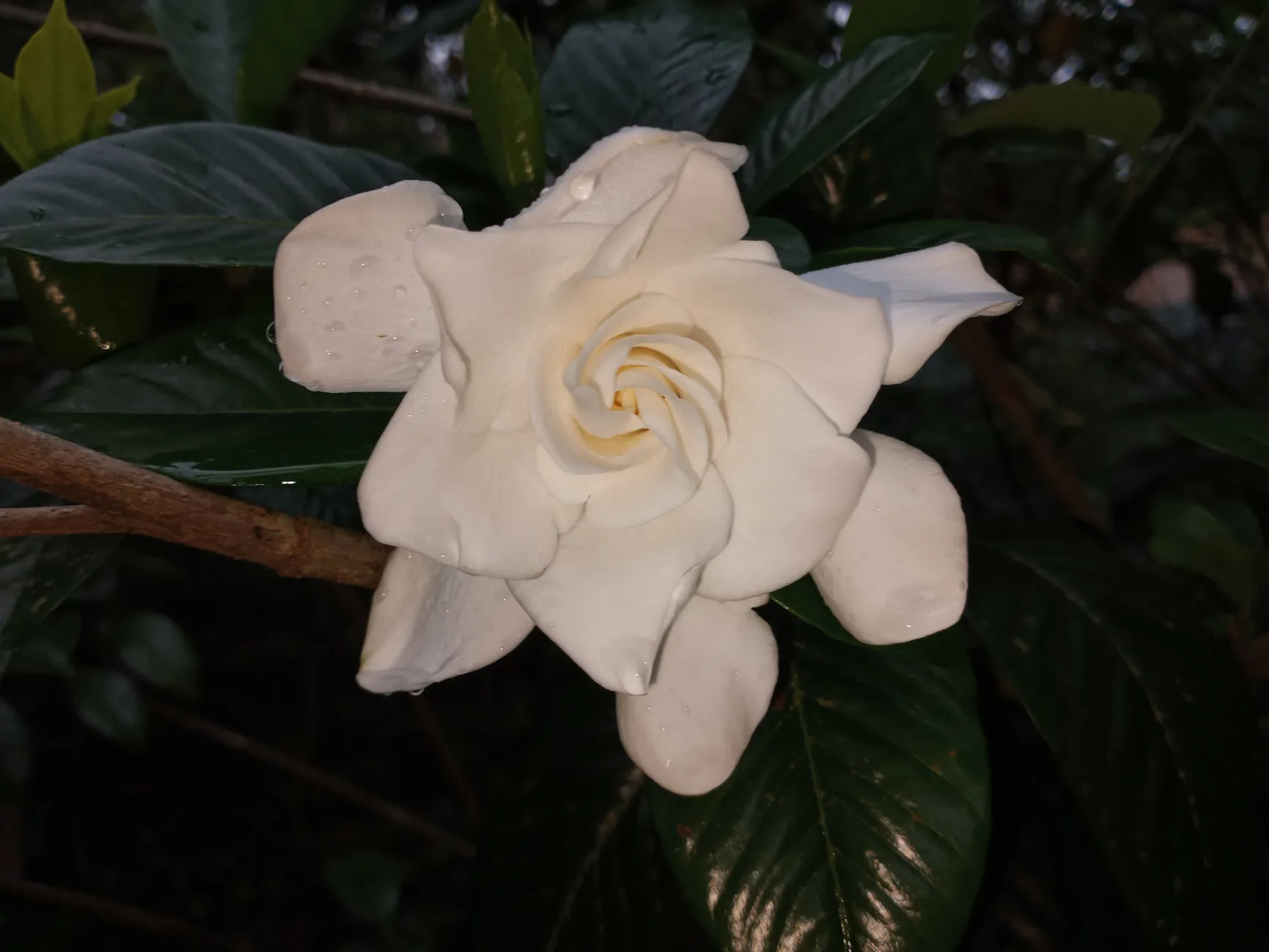Gardenia, known for its mesmerizing fragrance and elegant white blooms, is a favorite among gardeners and flower enthusiasts. This evergreen shrub belongs to the coffee family, Rubiaceae, and is native to tropical and subtropical regions of Asia, Africa, and the Pacific Islands. With its glossy green leaves and intoxicating scent, the gardenia flower holds a special place in gardens, bouquets, and even perfumery.
The Beauty of Gardenia
The gardenia flower is characterized by its creamy-white petals that exude a waxy texture and a delightful fragrance. The plant’s deep green foliage serves as the perfect backdrop, making the blooms stand out even more. These flowers can range in size from small to large, depending on the variety, and they often bloom from late spring to early summer, with some species flowering intermittently throughout the year.
Aromatic Appeal
One of the most striking features of gardenia is its enchanting fragrance. The scent is sweet, rich, and slightly citrusy, making it a popular choice for perfumes, scented candles, and essential oils. The alluring aroma is often associated with romance and tranquility, making gardenias a popular choice for weddings and special occasions.
Cultivation and Care
Growing gardenia plants requires patience and attention, as they are known to be a bit finicky. Here are some essential tips to ensure a thriving gardenies plant:
- Soil: Gardenias prefer well-draining, acidic soil with a pH between 5.0 and 6.5. Adding peat moss or pine bark can help maintain acidity.
- Sunlight: These plants thrive in partial shade or indirect sunlight. Too much direct sunlight can scorch their delicate leaves.
- Watering: Keep the soil consistently moist but not soggy. Overwatering can lead to root rot, while underwatering can cause bud drop.
- Humidity: Gardenies flourish in high humidity. Misting the leaves or placing a humidity tray nearby can help maintain the moisture levels.
- Fertilization: Use an acidic fertilizer, such as one formulated for azaleas or camellias, to provide essential nutrients and encourage blooming.
- Pruning: Prune after the flowering season to remove dead or weak branches and encourage new growth.
Common Challenges and Solutions
While gardenies are prized for their beauty, they can be susceptible to a few common problems:
- Yellowing Leaves: This may indicate iron deficiency or improper soil pH. Adding an iron supplement or adjusting soil acidity can help.
- Bud Drop: Overwatering, underwatering, or sudden temperature changes can cause buds to drop before blooming.
- Pests: Aphids, spider mites, and whiteflies are common pests that can attack gardenias. Using neem oil or insecticidal soap can keep infestations under control.
Symbolism and Uses
Gardenias have deep symbolic meanings in various cultures. They represent purity, love, and refinement, making them a popular choice for romantic gestures and bridal bouquets. In traditional medicine, gardenia extracts have been used for their anti-inflammatory and calming properties. Additionally, their essential oils are widely used in aromatherapy to promote relaxation and reduce stress.
Conclusion
The fragrant gardenia is truly a gem in the world of flowers. Its captivating beauty and alluring aroma make it a cherished plant for gardens, homes, and floral arrangements. While it requires careful attention and maintenance, the reward of its exquisite blooms and delightful scent is well worth the effort. Whether you’re a gardening enthusiast or simply appreciate nature’s beauty, adding a gardenia plant to your space is sure to bring elegance and tranquility.

